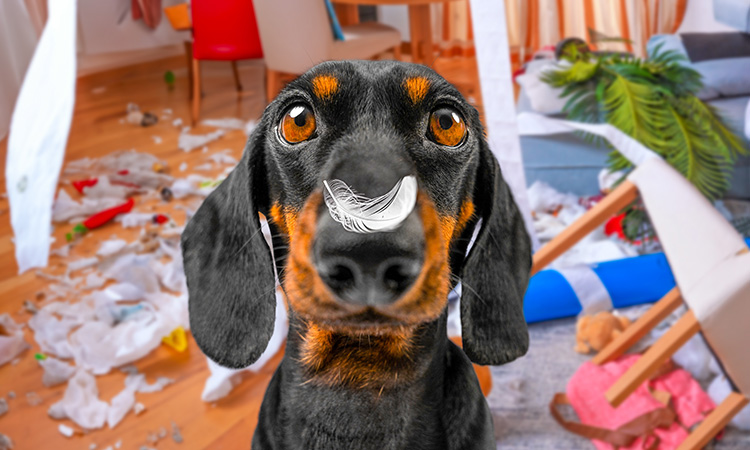How Often Should I Bathe My Dog?
How Often Should I Bathe My Dog?

Bathing your dog is an essential part of their grooming routine, but how often should you actually do it? The answer depends on several factors, such as your dog’s breed, coat type, lifestyle, and overall health. Bathing too frequently can strip your dog’s coat of natural oils, leading to dry skin, while not bathing them enough can result in a dirty coat and unpleasant odors. Here’s a detailed look at how often you should bathe your dog and what to consider when setting up a bathing schedule.
1. Coat Type
The type of coat your dog has plays a significant role in how often they need to be bathed.
• Hairless Breeds: Dogs like the Chinese Crested or the Xoloitzcuintli, despite having little to no hair, need regular baths. Their skin produces oils that can build up quickly, causing irritation if not cleaned weekly.
• Short-haired Breeds: Breeds with short, smooth coats, such as Beagles and Boxers, usually don’t require frequent baths. Once every 2-3 months is often sufficient, as their coat doesn’t trap dirt and oils as easily as long-haired breeds.
• Double-coated Breeds: Dogs like Huskies and Golden Retrievers have a dense undercoat, which helps repel dirt and water. They generally need fewer baths but regular brushing to remove loose fur and keep the coat healthy. In addition to coat type, dogs with curly coats (such as Poodles) may need more frequent bathing to avoid matting, while dogs with long flowing coats (like Afghan Hounds) may require frequent grooming and brushing but less frequent bathing.
2. Activity Level and Lifestyle
The more active and adventurous your dog is, the more likely they’ll need regular baths.
• Active Dogs: Dogs that spend a lot of time outdoors, playing in parks, or swimming will naturally get dirtier and might need baths more frequently. For example, dogs that love to swim in lakes or the ocean can develop an unpleasant odor if not bathed regularly.
• Indoor Dogs: Dogs that spend most of their time indoors and don’t engage in vigorous activities outdoors may only need occasional baths, especially if they are regularly brushed.
3. Skin and Health Conditions
Some dogs suffer from skin allergies or other dermatological issues that require medicated baths. In these cases, the frequency of baths will be determined by your veterinarian. Dogs with certain skin conditions, such as seborrhea or dermatitis, may need weekly baths with specially formulated shampoos to manage symptoms and maintain skin health.
4. General Grooming Practices
Bathing should be part of a larger grooming routine that includes regular brushing, nail clipping, and ear cleaning. Brushing your dog’s coat regularly helps remove dirt, loose fur, and distribute natural oils, which can reduce the need for frequent baths. Dogs with long or dense coats may benefit from more frequent brushing to prevent matting and tangling.
5. Odor and Dirt
Regardless of coat type or activity level, one of the most obvious signs that your dog needs a bath is when they start to smell, or their coat appears dirty. If your dog has rolled in something foul or their coat feels greasy to the touch, it’s time for a bath. Pay attention to any changes in smell or the condition of their coat, as these can be indicators that a bath is needed sooner rather than later.
Bathing Frequency Guidelines
To provide a more concrete guideline, here’s a general breakdown of how often different types of dogs might need baths:
• Hairless Breeds: Weekly.
• Short-haired Breeds: Every 2-3 months.
• Double-coated Breeds: Once every 3-4 months, with regular brushing.
• Long-haired Breeds: Once every 4-6 weeks, with frequent brushing.
Of course, these are just guidelines, and your dog’s individual needs may vary. Dogs that swim often or have oily skin may need more frequent baths, while those with dry or sensitive skin may require less.
Bathing Tips
When bathing your dog, use a shampoo specifically formulated for dogs, as human shampoo can disrupt the pH balance of your dog’s skin. Always rinse thoroughly to avoid leaving soap residue, which can lead to skin irritation. If your dog has a skin condition or sensitive skin, ask your vet to recommend a gentle or medicated shampoo. Remember to make bath time as stress-free as possible. Using warm water, a non-slip mat in the tub, and plenty of praise can help your dog associate bath time with positive experiences.
Final Thoughts
How often you bathe your dog depends on a mix of factors such as their breed, coat type, and activity level. By following these general guidelines and adjusting based on your dog’s specific needs, you can ensure your furry friend stays clean and healthy. And don’t forget, investing in dog insurance can be a smart way to cover unexpected skin conditions or health issues that may arise due to grooming practices.
Disclaimer The above information is for illustrative purposes only. For more details, please refer to policy wordings and prospectus before concluding the sales.










 Health Insurance
Health Insurance  Travel Insurance
Travel Insurance  Car Insurance
Car Insurance  Cyber Insurance
Cyber Insurance  Critical Illness Insurance
Critical Illness Insurance
 Pet Insurance
Pet Insurance
 Bike/Two Wheeler Insurance
Bike/Two Wheeler Insurance  Home Insurance
Home Insurance  Third Party Vehicle Ins.
Third Party Vehicle Ins.  Tractor Insurance
Tractor Insurance  Goods Carrying Vehicle Ins.
Goods Carrying Vehicle Ins.  Passenger Carrying Vehicle Ins.
Passenger Carrying Vehicle Ins.  Compulsory Personal Accident Insurance
Compulsory Personal Accident Insurance  Travel Insurance
Travel Insurance  Rural
Rural 











